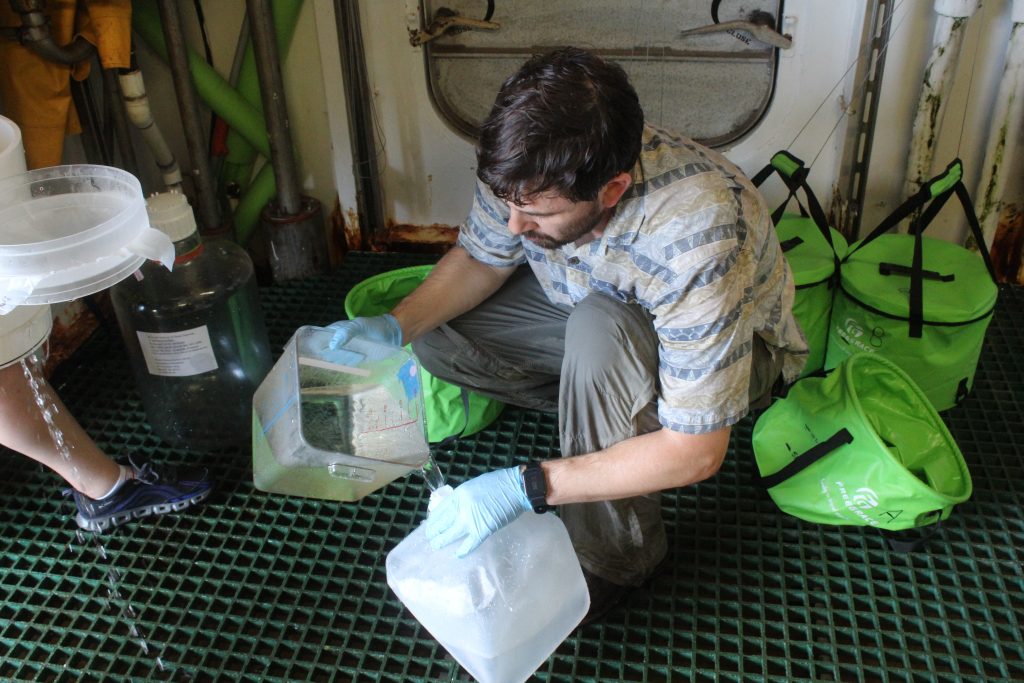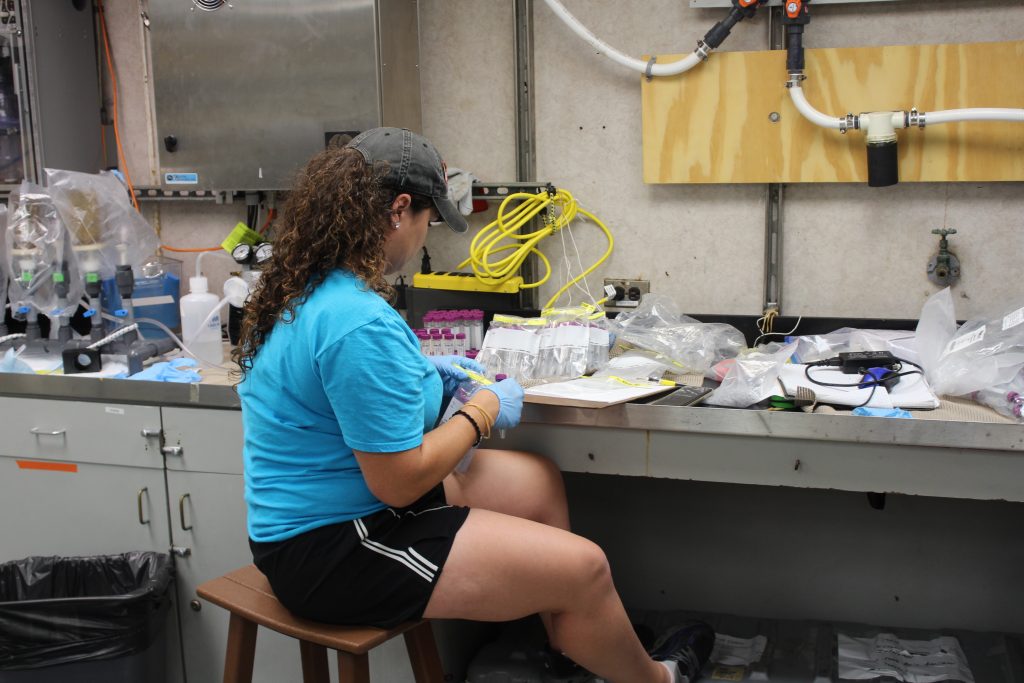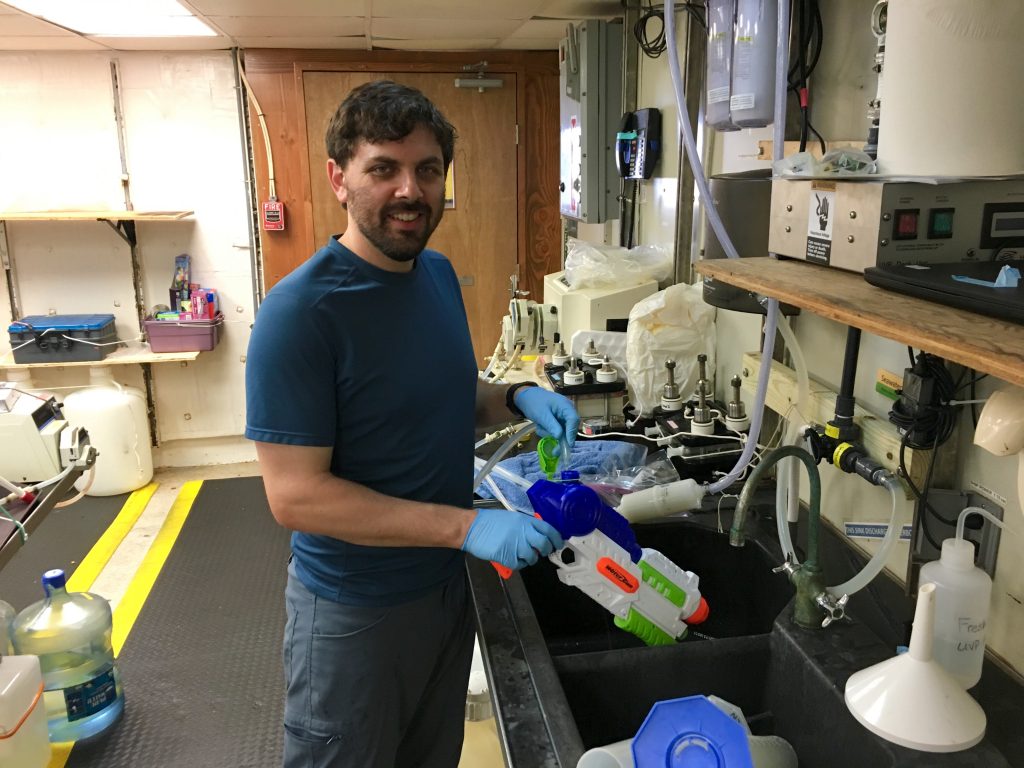Follow along as our scientists conduct research at sea
Marine snow and super soakers at sea

You wouldn’t typically see a snow while at sea in the Caribbean but thats not necessarily the case under the ocean’s surface. Jacob Cram from the University of Maryland Center for Environmental Science came on this research cruise to investigate marine snow in the Atlantic Ocean.
The term “marine snow” carries different definitions in the scientific community but Cram uses the term to describe any particles he can catch in a given volume floating in the water.
His interest is in particles that float down from the ocean’s surface and those suspended in the water. These particles are made up of the remnants of marine phytoplankton and other photosynthetic organisms from the oceans surface that die and float down into the deep sea.
On this cruise he will be looking at particle associated bacteria—those organisms that stick to particles of organic material in the ocean. What kind of bacteria and how many of each kind are on these deep sea particles?
Particle associated bacteria play an essential role in transporting carbon into the deep ocean. The bacteria eat these particles and the particles are partially responsible for transporting carbon into the deep ocean.

Aboard the ship, Jacob and his research assistant Ashley Hollins have collected water from depth profiles and poured them through a series of different pore-sized filters to catch marine particles and bacteria.
The team needs a large volume of water because there simply aren’t that many large particles per liter of water in the deep ocean.
One of the more creative aspects of his procedure to collect particles includes a well-known water gun called a Super Soaker. He fills this plastic water gun with de-ionized water—water that has been filtered and cleared of any impurities—and back rinses these filters into containers to be analyzed in the lab.

This method may seem unconventional, but has sped up the processing time of samples in the lab! The processing time for each sample is already a labor and time intensive process, so any simplification helps.
Once back at the laboratory in Maryland, they will be using genomic sequencing to differentiate bacteria and determine how many of each bacteria species he found in the deep ocean.
